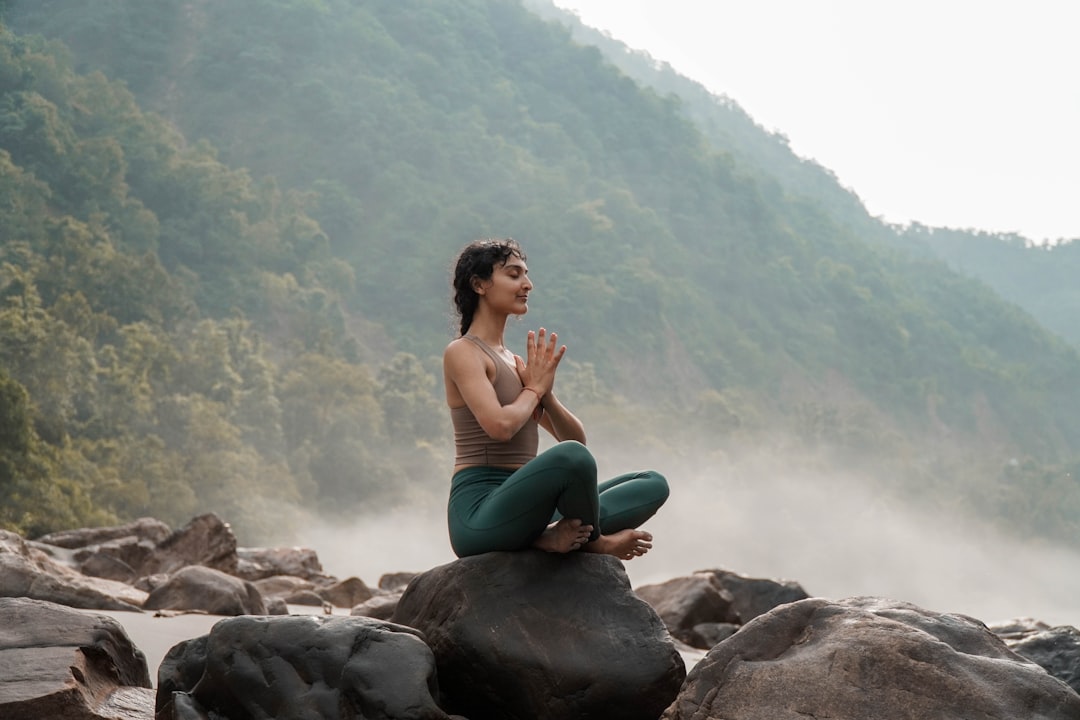Related
Essential Meditation Practices for Holistic Well-being
A comprehensive guide to understanding Essential Meditation Practices for Holistic Well-being and incorporating these practices into your daily...
Popular topics
04 min reading in—Meditation
Discover the transformative power of meditation with "Unlock Inner Peace: 7 Essential Steps to Meditative Bliss." This guide will lead you through simple yet profound techniques to calm the mind, reduce stress, and cultivate inner tranquility. Embark on a journey to find serenity and enhance your overall well-being with our actionable steps.

Hello, dear reader! If you're here, chances are, you're searching for a richer, more serene way of living. In our fast-paced world, finding inner peace can feel like an elusive dream. But before you sign up for a year-long retreat in the mountains of Tibet, consider this: inner peace might just be a few breaths away. Welcome to your guide on meditative bliss. Let’s take a gentle dive into unlocking the serenity that resides within you.
Meditation is more than just closing your eyes and hoping for the best. It’s a practice—one that nurtures a calmer mind, fosters awareness, and paves the way for a more fulfilling life. Studies have shown that regular meditation can reduce stress, improve emotional health, extend your attention span, and even reduce age-related memory loss. Sounds like magic, right? But it's simply the science of mindfulness and clarity.
Embark with me on this journey and discover seven essential steps to meditative bliss.
Creating a dedicated space for meditation can be incredibly beneficial for your practice. Just like how a workspace primes your brain for productivity, a meditation sanctuary immerses you in tranquility.
If possible, align your space with nature. A glimpse of the outdoors not only invigorates your practice but also cements your connection to the natural world. Even a photograph or a small fountain can cultivate serenity.
Breathing is the foundation of meditation. Conscious breathing helps ground us in the present moment. When we breathe, we send a signal to our brain to relax.
While focusing on your breath, immerse yourself in the sensations it brings. Notice the cool air filling your lungs and the warm breeze as you exhale. Being present is key.
Just like any new skill, meditation becomes more effective with regular practice.
After your meditation, consider jotting down your thoughts. This can help track your progress and provide insight into your emotional and mental landscapes.
There are numerous meditation techniques, each offering unique benefits. Experiment to see what resonates with you.
If you find static meditation challenging, consider movement-based practices like Tai Chi or Qigong that harmonize breath with movement.
Meditation is a journey, not a destination. It’s easy to become frustrated if inner peace doesn't come immediately.
Engaging in group meditations or joining a community class can provide support and encouragement. Sharing experiences with others often amplifies the practice.
Congratulations on taking these steps towards meditative bliss! You’ve begun what can be one of the most rewarding journeys in life—the inward journey. Remember, the path to inner peace is uniquely yours, with no right or wrong way to feel serene. By creating a sanctuary, breathing with intention, maintaining consistency, exploring techniques, and practicing patience, you are well on your way to unlocking the inner peace that resides within us all.
Take a moment now to close your eyes… breathe… and smile. You are capable of beautiful, profound peace.
Happy meditating! 🌿
Thank you for joining me today to explore meditative bliss. If you have any questions, meditative experiences to share, or suggestions for future wellness topics, feel free to drop a comment below. Let's support each other on this journey to holistic wellness!
Related
A comprehensive guide to understanding Essential Meditation Practices for Holistic Well-being and incorporating these practices into your daily...
Related
Discover the keys to tranquility with "Unlock Inner Peace: 7 Transformative Meditation Techniques." This guide delves into powerful practices that...
Related
Discover the path to tranquility with "Unlock Inner Peace: Transformative Meditation Techniques Revealed." This blog post unveils powerful methods...